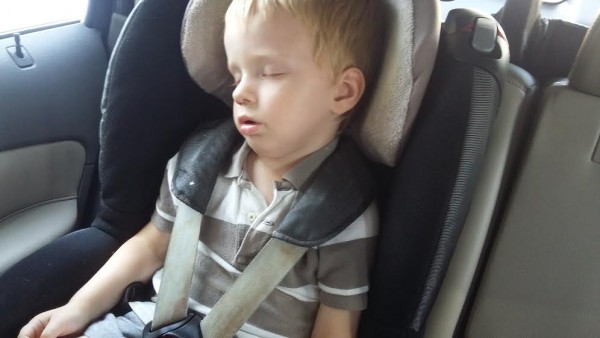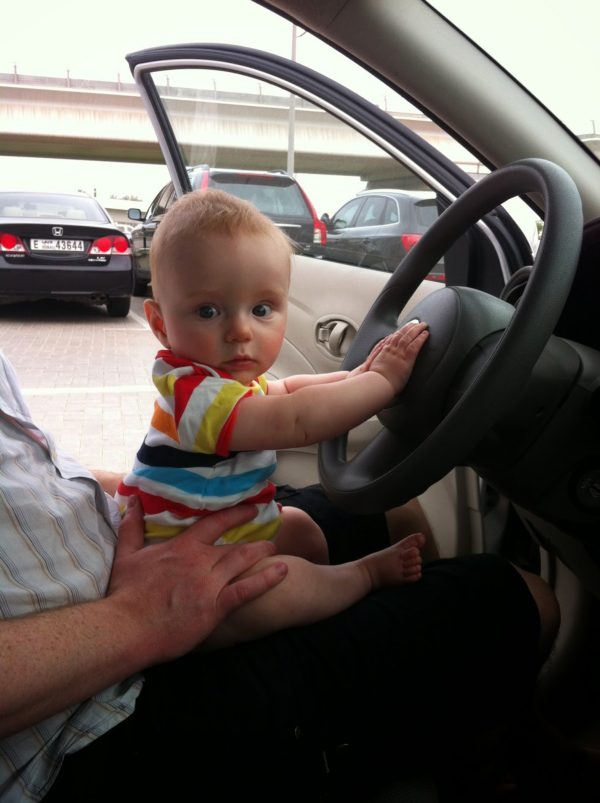As a parent, we worry about keeping our children safe and sometimes forget just how vulnerable they are when travelling in cars and out and about on the roads. Whether you’re out on the school run, heading to the shops, or off on a longer journey, you obviously want to make sure that your family arrive at your destination safely.
We know how much of daunting task planning a road trip with a baby can be. There’s lots to think about, such as how to keep them content while on the road, what to do if they seem unsettled, and how to ensure you all arrive safe and happy. Well, worry not, because we’re here to give you some helpful advice on how to keep your baby safe on the road.
Car seats
Before hitting the road, you definitely need the correct car seat. A car seat is essential for keeping a baby safe when travelling. All babies need to be in a rear facing car seat when they are under the age of 24 months old. This is because their necks are not strong enough to withstand any pressure of a collision that could happen head on in the forward facing position.
By law, all children must be in an appropriately sized car seat until they are 135cm metres tall, or 12 years old – whichever one comes first for your child. You need to choose a seat that’s based on the height and weight of your child, so do your research on which car seat is best suited for your baby. Click here for everything you need to know about car seat laws.
Car seats are grouped into different number categories. These groups are based on weight and age ranges:
- Group 0: 0-10 kg (birth to 6-9 months)
- Group 0+: 0 – 13kg (birth to 12-15 months)
- Group 1: 9-18 kg (9 months to 4 years)
- Group 2: 15 – 25 kg (4 – 6 years)
- Group 3: 22 – 36 kg (6 – 11 years)
Many baby seats are part of a wider travel system, alongside the pram, so they can be used both in the car and attached to the pram. Although you must remember that car seats are for travelling and not prolonged naps – babies should be sleeping in a flat position where possible.

Install a mirror
This is good when you’re driving alone with your baby in the car as it can otherwise be difficult for you to see if they’re okay. By installing a back seat mirror, you will have a view of everything that’s going on in the rear of the car, giving you a better peace of mind.
Don’t give them loose toys or food
In order to be as safe as possible, it’s best to avoid giving them loose toys or food to eat in the car. Both of these can potentially become choking hazards and even with a mirror allowing you to see your child, you can’t keep an eye on them at all times. Unless you have someone riding in the back seat with your child, monitoring them, wait until you stop for snacks, drinks and play time.
Window shades
We all know the feeling of your arm being a lovely shade of bright red because you’ve had it on the window the whole journey. This alone just highlights the importance of having window shades in your car to protect your child from the sun and getting burnt. A sunshade provides an additional protection between the sun and your baby while still maintaining visibility – all you need to do is position it in the window.
Enable child locks
Pushing a button or pulling a handle in a car can open a window or a door at any point. By child locking the doors, your little one will be unable to open them from inside the vehicle when you’re driving. A lot of modern cars will have separate window locks too which will prevent your child from throwing things out of the window.
Your child’s safety is your responsibility, so following these tips should help keep our baby out of harm’s way when on the road.


